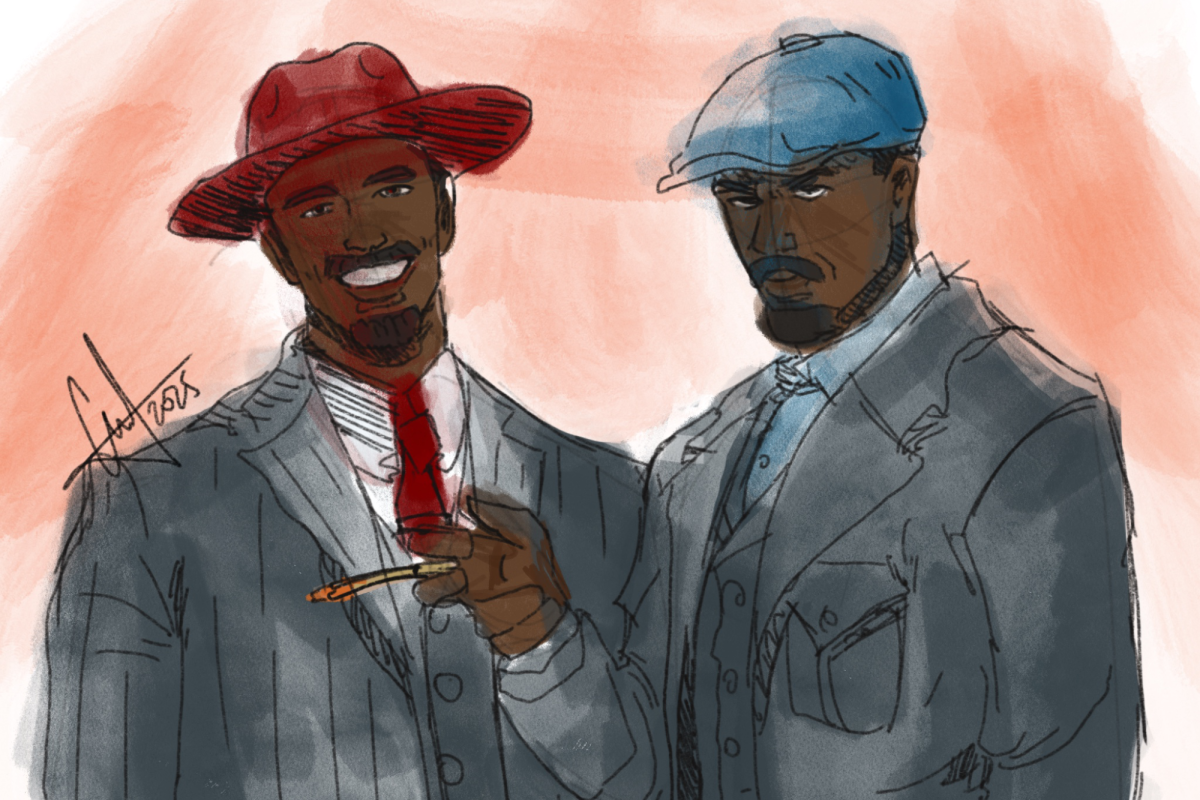
Cici Liu
While Ryan Coogler is known for directing superhero and action movies, such as the “Black Panther” and “Creed” series, his new box office hit “Sinners” takes on a new tone. The film blends horror with history, featuring vampires and blues music to create a gory but powerful movie. The movie stars actors Michael B. Jordan and Hailee Steinfeld, but the storyline is unlike anything either of them has acted in before.
The film is set in 1930s Clarksdale, Mississippi, where twin brothers Smoke and Stack, both played by Jordan, return from Chicago to start a juke joint––a bar specifically designed for dancing and music. In order to bring attention to the grand opening, they convince their younger cousin, Sammie, played by rising star Miles Caton, to perform the juke’s opening act, giving him the opportunity to showcase his talents as a young blues guitarist. Drawn to the celebration in the juke joint and Sammie’s musical talents, a group of white vampires try to infiltrate the festivities and overthrow the town.
Through sharp writing and compelling performances, “Sinners” offers a moving portrayal of how music can bridge generational divides within a community. Coogler uses rich symbolism to deepen this theme. The guitar, for instance—given to Sammie by Smoke and Stack—represents the enduring power of musical expression across time, geography,and culture. In one particularly striking scene, a continuous shot pans across the juke joint, showcasing a diverse lineup of musicians from different eras: African dancers in tribal garb, a contemporary rapper performing to one part of the crowd, and a futuristic artist in a shimmering silver suit. The result is a stunning visual montage that reflects music’s time-defying nature. The vibrant colors, intricate costumes and special effects give the scene the same hypnotic pull as the music itself.
Music in the film is also a vehicle for personal identity. This theme becomes clear through Sammie’s conflict with his father, a preacher who urges him to abandon the blues and join the church. Despite his father’s insistence, Sammie uses the guitar to deny the identity his father tries to force on him, illustrating Sammie’s embrace of who he is through music and staying true to himself despite what society wants him to become.
Of course, one cannot discuss “Sinners” without addressing its most striking plot point: the murderous vampires who appear halfway through the film and terrorize its protagonists. Going into the movie, I found myself wondering what the vampires would symbolize, and as the film progressed, I was able to piece together an answer to that question. Explaining their attraction to the juke joint, the vampires share that they wanted to use Sammie’s music to connect with their own ancestors. Hoping to convince Sammie and the others to share their music, the vampire’s leader, Remmick, played by Jack O’Connell, promises an eternal life of racial equality if they join the community of vampires. However, this solution offers uniformity at the cost of diversity. Coogler critiques this idea masterfully, instead promoting a vision of the future rooted in individuality and cultural acceptance.
Overall, Coogler and the entire cast paint a beautiful picture of what it means to harness the power of music––bridging generations while strengthening one’s own identity in the process. The film uses music’s ability to transcend boundaries and bring together communities while also showing racial divide. “Sinners” comes highly recommended for its powerful storytelling and emotional resonance, making it a must-watch for those who appreciate the power of music. It is currently showing at the Paseo’s Regal theater, Landmark Pasadena Playhouse, IPIC and more.